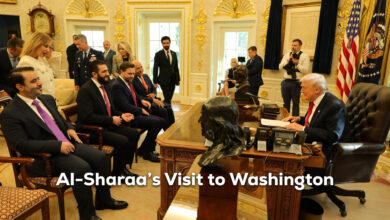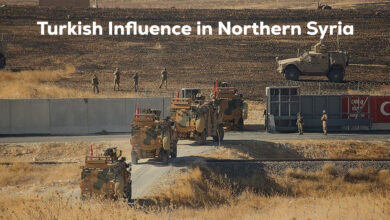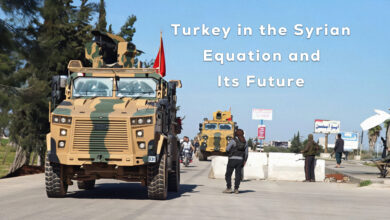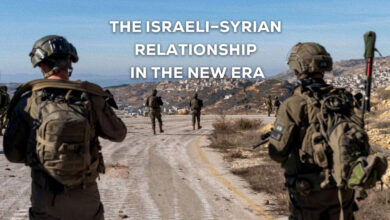The new positioning of the United States in the Eastern Mediterranean
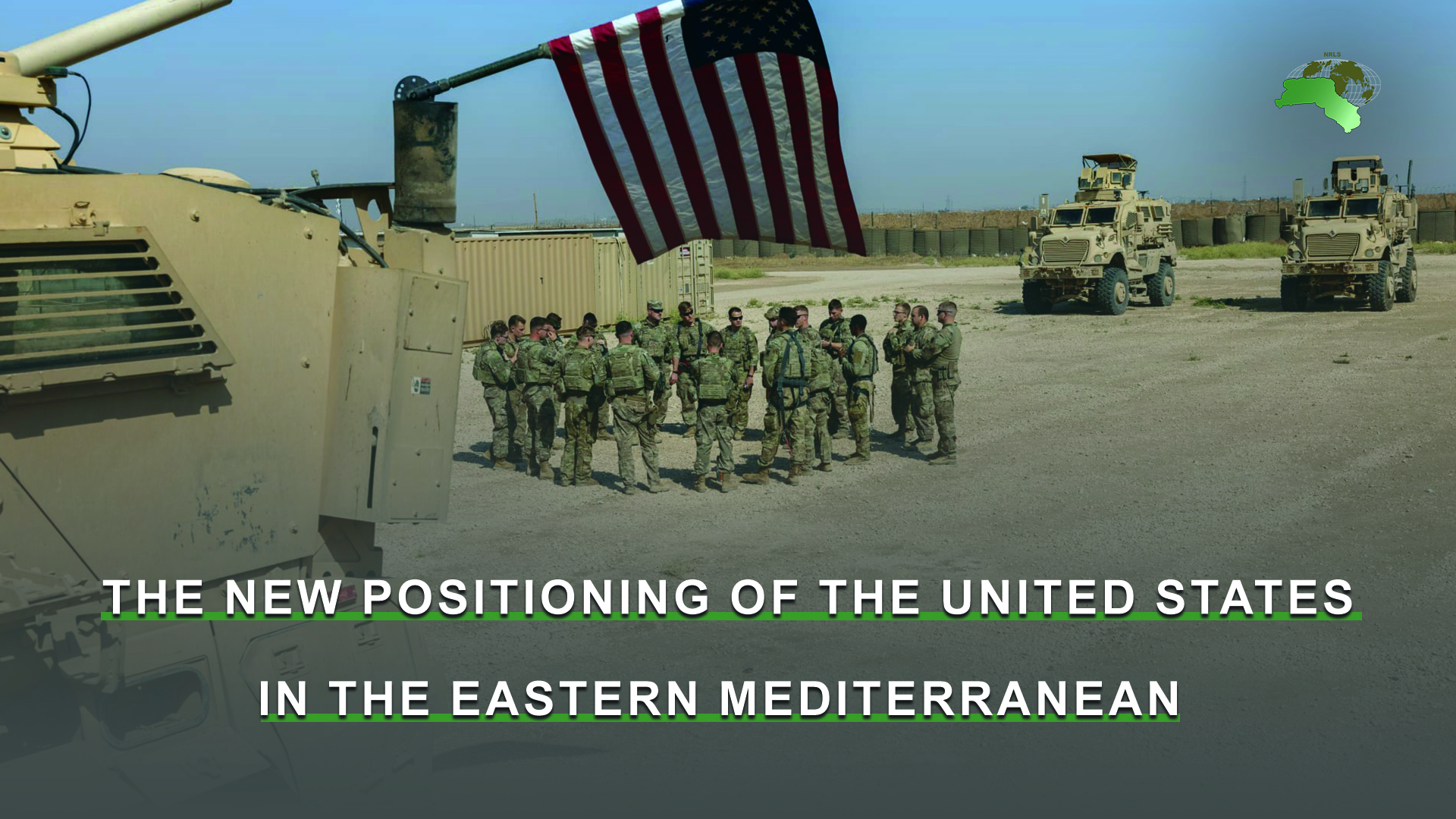
At the beginning of the 21st century, the world began to witness new events and wars, as well as changes in the governing systems of some countries. While these events were not expected, such as the events of September 11, the war on terror and the occupation of Afghanistan, the second Gulf War and the fall of Saddam Hussein’s regime, and the change from a centralized to a federal governing system, passing through the crises in the Middle East under the name of “Arab Spring” or the Spring of Nations, and the change in the governing system in Ukraine from pro-Russia to pro-West, the occupation of the Crimean Peninsula, and then the Russian military intervention in Ukraine, and the emergence of economic and colonial projects such as the Chinese economic project “the Belt and Road”, the Iranian Shiite Crescent project, and the new Ottoman project after the change of the Turkish system from a secular to an Islamic system, with the rise of China and Russia as major powers trying to play a bigger role in the global system.
So, the world is currently witnessing a third world war, not in its traditional sense, like the first or second world war, at least currently – but in its new concept closer to what is known as “proxy war”, without direct involvement of major countries. The United States, which leads the world system “the single pole”, realizes the risks of the rise of China as a major economic power competing with it and attempting to expand its influence in the Middle East through “the Belt and Road” project, as well as the rise of Russian military power and its military expansion in the Middle East from the Syrian gate, and even the ambition of the West “Western Europe” to gain independence from the United States’ policy. All of these events and changes are indicators of major changes in international politics, which have resulted in international and regional crises.
With the expiration of the nationalist Middle Eastern countries and the futility of renovating these systems after they have carried out their mission as defined by the capitalist system – especially with regards to Israel as a new and recognized state in the region, and after most Arab countries have normalized relations with it – but after their openness to China and Russia, these systems built by the capitalist system have become a potential threat in the future as “rogue states”. After the Second Gulf War and the emergence of rogue states, the United States succeeded in increasing its military influence in the Middle East, especially in the Gulf region. After the events of September 11, the United States began a new phase of intervention in the affairs of the Middle Eastern and Central Asian countries under the pretext of fighting terrorism with the aim of encircling China and Russia at the same time, and gaining full control of the Middle East, in addition to pressuring Arab countries to recognize Israel and normalize relations with it. But with the growing military power of Russia and the expansion of Chinese economic dominance, as they have become a threat to the United States, especially after the so-called “Arab Spring” crisis and the increasing tension between Arab countries and Iran after its expansion in Iraq, Syria, Lebanon, and Yemen. Therefore, in order to prevent any potential rise of China as a new competitor, and to prevent it and Russia from expanding in the Middle East, the United States has to rearrange its cards in the region.
The new positioning of the United States in the Eastern Mediterranean
With the outbreak of the Syrian crisis and what is known as the “Arab Spring,” the American military force did not disappear from the Eastern Mediterranean, which was previously linked to the crises and problems that are raging in the region, but it did not take the form of stability. However, the new positioning of the United States in this form may take on a stable character, especially with the emergence of the “Western – Russian” conflict after the Ukrainian war and after the operation carried out by Hamas.
The military operation carried out by Hamas on October 7th and Israel’s war on the movement in the Gaza Strip, and with increasing tension between the so-called “axis of resistance” and Israel, and the Houthis’ shelling of Israel with ballistic missiles and the detention of an Israeli ship, in addition to the operations carried out by Hezbollah in northern Israel, the United States found the pretext to increase its military influence in the Eastern Mediterranean, and may work to enhance its military presence in Iraq and Syria. After October 7th, the United States worked to send the aircraft carrier Gerald Ford and its combat group consisting of a “Ticonderoga” class destroyer and 3-4 Arleigh Burke class destroyers, and was recently joined by the US Sixth Fleet flagship “Mount Whitney.” The US Department of Defense also decided to support its naval group in the Eastern Mediterranean with an exploratory combat group of Marines, consisting of a helicopter carrier, a landing ship “Bataan LHD,” a landing transport ship/platform LPD of the “San Antonio” class, and an amphibious assault ship “USS Carter LSD,” and the exploratory combat group includes more than 2000 members of the US Marine Corps, which acts as a rapid intervention force in emergencies and in various theaters of operations. The United States decided to enhance its military presence and deterrence force in the region to include sending the aircraft carrier “Eisenhower” of the “Nimitz” class and its accompanying combat group, consisting of a “Ticonderoga” class destroyer, two “Arleigh Burke” destroyers, in addition to a “Ohio Class” nuclear submarine loaded with “Tomahawk” cruise missiles. However, after the Houthis shelled Israel with suicide drones and ballistic missiles, the US command decided to change the direction of the aircraft carrier “Eisenhower” to the southern Red Sea.
The United States’ goals in repositioning itself in the Eastern Mediterranean.
The increase of American military influence in the eastern Mediterranean did not come out of nowhere. The United States has plans for what might happen in the region in the future. The Western-Russian conflict, the American-Chinese conflict, the ongoing Syrian crisis, and the presence of Russia and the United States alongside regional powers Iran and the occupying state of Turkey have cast their shadows over Syria and the eastern Mediterranean as a battleground for settling scores. The military buildup in the eastern Mediterranean is accompanied by escalating tensions in the region. The American-Western military buildup comes for several reasons:
- Targeting Iranian bases and affiliated militias, as well as terrorist group strongholds like ISIS in Iraq and Syria. This includes launching ballistic missiles from the eastern Mediterranean and striking them with “Tomahawk” missiles to legitimize their military presence in the region, especially since Russia has a naval military base in Tartus alongside the Hmeimim airbase.
- Encircling the Russian presence in Syria, specifically the Hmeimim airbase and the Tartus naval base, by increasing their naval military strength in the eastern Mediterranean and bolstering their support in Syria and Iraq. This could mean the influx of advanced weapons to their bases and increased support for their local partners. The Russian military presence in Syria and their attempts to establish the Eurasian military alliance through economic and security alliances like BRICS and the Shanghai Cooperation Organization pose a threat to the United States. Russia is attempting, through these organizations, to weaken the global dominance of the dollar by using local currencies and to transform these organizations from security-focused entities aimed at fighting terrorism into military organizations to counter the NATO alliance and strengthen the idea of multiple poles in its favor.
- The Arab countries are pushed to deal with the United States as a dominant military power in the region and the world, so the region may witness the birth of an Arab-American alliance, or the so-called Arab NATO, between the United States, the Gulf countries, Jordan, and Egypt, with Saudi Arabia and Israel joining after normalization between the two parties to confront the Iranian threat and Iranian militias in the region. The American goal is to militarily connect the region with it, and prevent Russia and China from military expansion in the region, through arms deals or the construction of a nuclear reactor for peaceful purposes, especially since the Gulf countries have begun to consider building a nuclear reactor on their territories similar to the “Dabaa” nuclear station in Egypt and the “Akkuyu” nuclear station in Mersin, Turkey, and another on the Black Sea that Russia has established in the region. Despite the rejection of some Arab countries for this “alliance” project, the increasing tension in the region may force the Arab countries that refuse to accept the idea of a military alliance with the United States.
- Military cooperation may be accompanied by economic cooperation in the Arab region, especially with the United States’ proposal of the “economic corridor” project that connects South Asia to Europe through the Arabian Gulf region. Regional countries are competing for it. Turkey aspires to be an international trade hub between the East and the West, so it has proposed an alternative project where the road passes from Iraq to Turkey instead of the American project, which consists of two separate corridors. One connects India to the Arabian Gulf, and the other connects the Arabian Gulf, passing through Jordan and Israel, to Europe. The United States is trying to block the Chinese project “Belt and Road” and accelerate Gulf Arab normalization with Israel, especially since this project supports “Mohammed bin Salman’s 2030 vision” and supports the new Saudi city “NEOM,” which is planned to be a center for attracting global investments in renewable energy and clean hydrogen projects. On the other hand, there is economic pressure on Egypt, as the American project may affect Egypt’s imports from Suez Canal traffic, pushing it to engage economically and militarily with the United States, possibly leading to an agreement to build a US naval base in Egypt. It is not unlikely that in the policy of pressuring Egypt as a pivotal state in the region, the Israeli war on Gaza and its erasure from the map could be the beginning of implementing a project that connects the Gulf of Aqaba to the Mediterranean, either through opening a waterway similar to the Suez Canal or through railways.
- After doubling or even eliminating the movement of Hamas in the Gaza Strip, it may be Hezbollah’s turn. The continuous bombing of Israeli sites in the north by Hezbollah without a strong response from Israel, along with American pressure on Israel to prevent it from opening the northern front, may be to give Israel time to eliminate the Hamas movement and jihadist groups in the Gaza Strip; that is, to eliminate jihadist groups internally “inside Palestine”, meaning cutting off Iran’s influence in Palestine, and then focusing on Hezbollah in Lebanon. Israel, the United States, Arab countries, and even the Lebanese people reject Hezbollah’s control of Lebanon, which has led the country to a severe economic and political crisis after Hezbollah’s growing influence in Lebanon, in addition to the party’s military strength and its acquisition of advanced weapons from the Syrian and Iranian regimes, which poses a strong threat to Israel, which is working to bomb Iranian sites and shipments of weapons heading to Hezbollah in Lebanon.
- As for the real goal of all this, it is to maintain its global dominance and make the leadership of the Middle East in the hands of Israel after Arab normalization and linking the region to economic and military projects; in order to preserve the existing world order and to stand in the face of any Chinese or Russian steps aimed at changing the features of this system.
The future of the Middle East in light of the ongoing conflict
The Middle East, with its geopolitical location, ethnic and cultural diversity, and abundance of natural resources, and its control over three continents and waterways that are the lifelines to the West, has been the center of world attention since ancient times. Whoever controls the region has the power to control the world, and the security of the United States is derived from its almost absolute control over the region. Therefore, the Middle East has witnessed the emergence of civil “states” and then the emergence of the Persian, Roman, and Ottoman empires, followed by Western colonial competition in the region, resulting in divisions and the emergence of nationalist states with catastrophic consequences for the region’s peoples. With the collapse of the Soviet Union as a second pole, and the rise of Russia as a great power with expansionist ambitions alongside the giant economic power of China, crises and conspiracies have increased in this global system aimed at dividing the bonds of the region’s peoples and erasing their cultures that have lasted for thousands of years in the service of its systems and ambitions.
Some of the crises that have affected the region under the pretext of democracy, the Turkish threat represented by its Sunni Ottoman project, the Iranian threat represented by its Shiite project, and its conflict with Israel and the United States are nothing but a smokescreen, and this conflict is nothing but the implementation of the Western agenda in the Gulf region to serve Israel and the United States, and to force the Arabs to turn towards Israel as their savior from the Iranian threat in exchange for normalization and relinquishing the Palestinian issue. Similarly, Islamic Turkey and its Ottoman project, and its support for the Muslim Brotherhood, are nothing but an attempt to pull the rug out from under the feet of the Kingdom of Saudi Arabia and to control terrorist groups in a way that serves its interests and the interests of the West in the region.
Therefore, the ongoing international conflict between the East (represented by China and Russia) on the one hand, and the West (represented by Western Europe, the United States, and NATO) on the other hand, over the global system, including the regional countries, especially Turkey and Iran, has turned the Middle East into a conflict zone. The region has become a center for political, military, and social crises that have emerged from the nationalistic states created by the West. Due to the failure of these “nationalistic states” to solve any of the social issues and their opposition to democracy, they have become even anti-social, as their birth was based on contradiction with the “democratic nation” as a necessity of their logic, which turned this contradiction into a contradiction with society. This explains the Syrian crisis as an example, and thus the region will be dragged towards the edge of collapse. This is where the great powers derive their strength and dominance over the region, as these nationalistic regimes are nothing but a tool created in the Middle East and operate according to Western dictates, harnessing them according to its needs and projects.
In this context, the operation carried out by Hamas on October 7th against Israel is surrounded by many doubts and will bring many events with it. With the ongoing Russian-Western conflict in Ukraine and the ongoing Syrian crisis with no signs of a solution, it may be the beginning of a new stage that carries winds of change in the Middle East politically and militarily, starting with Gaza and then Lebanon; to end the control of Hezbollah and weaken it politically and militarily, and may be accompanied by the emergence of autonomous administrations in southern Syria as a buffer zone to keep Iran and its militias away from the Israeli borders to ensure its security.

